José P. González-Coma
Defense University Center at the Spanish Naval Academy
Slow Fluid Antenna Multiple Access with Multiport Receivers
Jul 23, 2025Abstract:We investigate whether equipping fluid-antenna (FA) receivers with multiple ($L>1$) radiofrequency (RF) chains can improve the performance of the slow fluid-antenna multiple access (FAMA) technique, which enables open-loop connectivity with channel state information (CSI) available only at the receiver side. We analyze the case of slow-FAMA users equipped with multiport receivers, so that $L$ ports of the FA are selected and combined to reduce interference. We show that a joint design of the port selection matrix and the combining vector at each receiver yields significant performance gains over reference schemes, demonstrating the potential of multiport reception in FA systems with a limited number of RF chains.
User Selection in Near-Field Gigantic MIMO Systems with Modular Arrays
Jan 10, 2025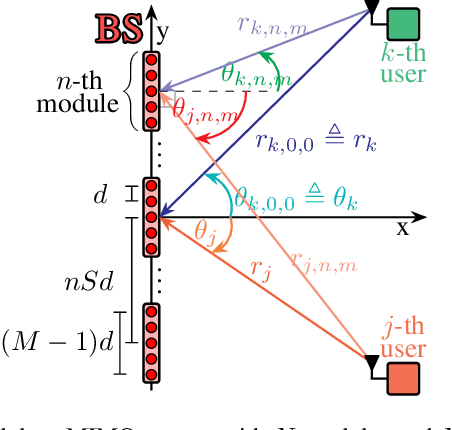
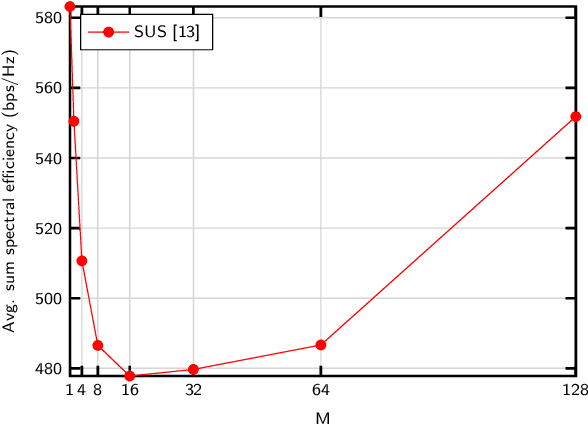
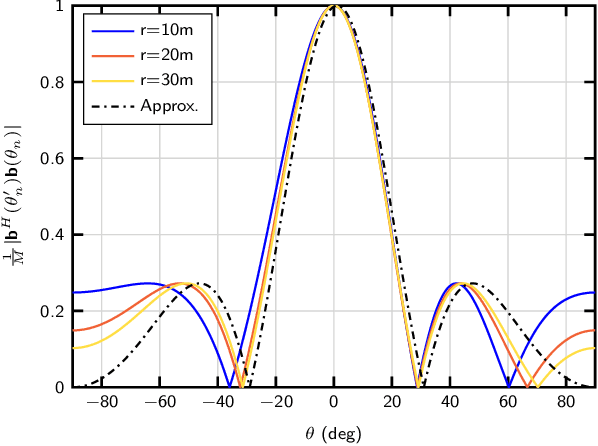
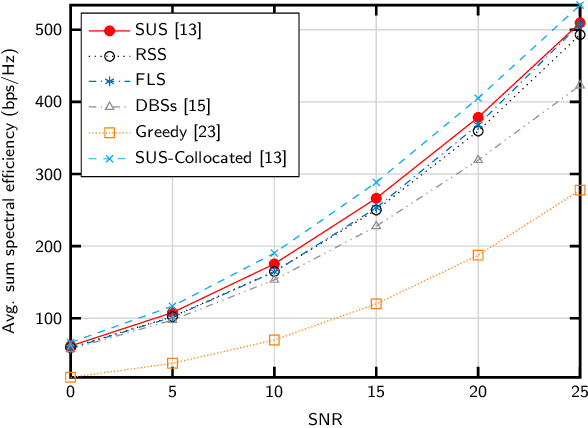
Abstract:Modular Arrays (MAs) are a promising architecture to enable multi-user communications in next-generation multiple-input multiple-output (MIMO) systems based on extra-large (XL) or gigantic MIMO (gMIMO) deployments, trading off an improved spatial resolution with characteristic interference patterns associated to grating lobes. In this work, we analyze whether MAs can outperform conventional collocated deployments, in terms of achievable sum-rate and served users in a multi-user downlink set-up. First, we provide a rigorous analytical characterization of the inter-user interference for modular gMIMO systems operating in the near field. Then, we leverage these results to optimize the user selection and precoding mechanisms, designing two algorithms that largely outperform existing alternatives in the literature, with different algorithmic complexities. Results show that the proposed algorithms yield over 70% improvements in achievable sum-spectral efficiencies compared to the state of the art. We also illustrate how MAs allow to serve a larger number of users thanks to their improved spatial resolution, compared to the collocated counterpart.
A Rank-Constrained Coordinate Ascent Approach to Hybrid Precoding for the Downlink of Wideband Massive (MIMO) Systems
Jan 30, 2024Abstract:An innovative approach to hybrid analog-digital precoding for the downlink of wideband massive MIMO systems is developed. The proposed solution, termed Rank-Constrained Coordinate Ascent (RCCA), starts seeking the full-digital precoder that maximizes the achievable sum-rate over all the frequency subcarriers while constraining the rank of the overall transmit covariance matrix. The frequency-flat constraint on the analog part of the hybrid precoder and the non-convex nature of the rank constraint are circumvented by transforming the original problem into a more suitable one, where a convenient structure for the transmit covariance matrix is imposed. Such structure makes the resulting full-digital precoder particularly adequate for its posterior analog-digital factorization. An additional problem formulation to determine an appropriate power allocation policy according to the rank constraint is also provided. The numerical results show that the proposed method outperforms baseline solutions even for practical scenarios with high spatial diversity.
Alternating Minimization for Wideband Multiuser IRS-aided MIMO Systems under Imperfect CSI
Jan 29, 2024



Abstract:This work focuses on wideband intelligent reflecting surface (IRS)-aided multiuser MIMO systems. One of the major challenges of this scenario is the joint design of the frequency-dependent base station (BS) precoder and user filters, and the IRS phase-shift matrix which is frequency flat and common to all the users. In addition, we consider that the channel state information (CSI) is imperfect at both the transmitter and the receivers. A statistical model for the imperfect CSI is developed and exploited for the system design. A minimum mean square error (MMSE) approach is followed to determine the IRS phase-shift matrix, the transmit precoders, and the receiving filters. The broadcast (BC)- multiple access channel (MAC) duality is used to solve the optimization problem following an alternating minimization approach. Numerical results show that the proposed approach leads to substantial performance gains with respect to baseline strategies that neglect the inter-user interference and do not optimize the IRS phase-shift matrix. Further performance gains are obtained when incorporating into the system design the statistical information of the channel estimation errors.
Low-Complexity Distance-Based Scheduling for Multi-User XL-MIMO Systems
Apr 28, 2021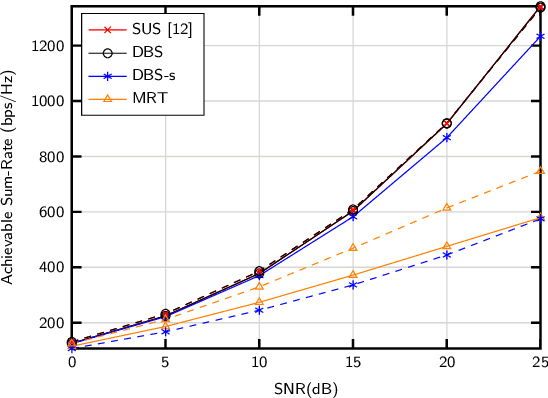
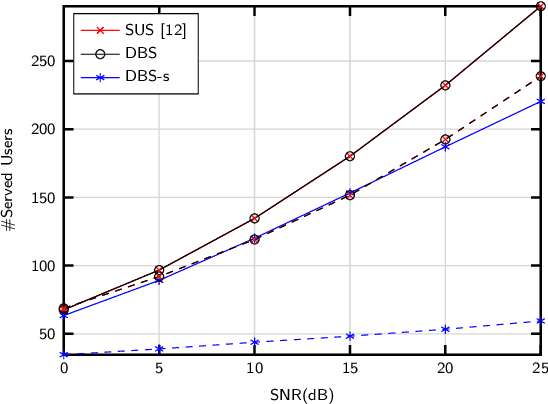
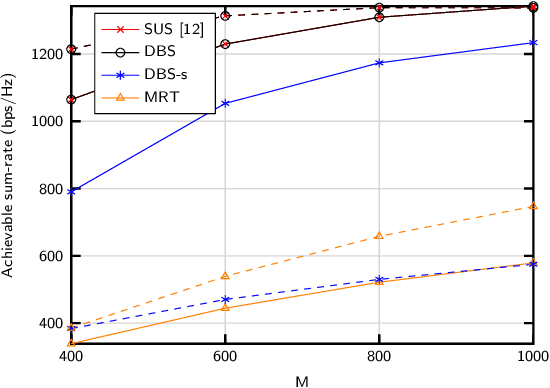

Abstract:We introduce DBS, a new technique for user selection in downlink multi-user communications with extra-large (XL) antenna arrays. DBS categorizes users according to their equivalent distance to the antenna array. Such categorization effectively accounts for inter-user interference while largely reducing the computational burden. Results show that (i) DBS achieves the same performance as the reference zero-forcing beamforming scheme with a lower complexity; (ii) a simplified version of DBS achieves a similar performance when realistic spherical-wavefront (SW) propagation features are considered; (iii) SW propagation brings additional degrees of freedom, which allows for increasing the number of served users.
 Add to Chrome
Add to Chrome Add to Firefox
Add to Firefox Add to Edge
Add to Edge